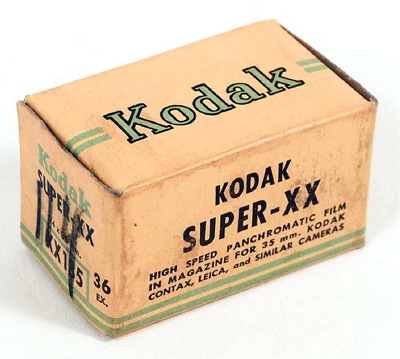 [In a previous Guest Post, military historian Charles Herrick dug out the documentation and painstakingly tracked the route Robert Capa’s films would have taken before John Morris actually got his hands on them in LIFE‘s London office. His analysis made it clear that, in order to meet LIFE‘s deadline for its upcoming D-Day issue, Capa believed he had no choice but to leave the invasion front in order to ensure the timely arrival of his films at LIFE on the evening of June 7.
[In a previous Guest Post, military historian Charles Herrick dug out the documentation and painstakingly tracked the route Robert Capa’s films would have taken before John Morris actually got his hands on them in LIFE‘s London office. His analysis made it clear that, in order to meet LIFE‘s deadline for its upcoming D-Day issue, Capa believed he had no choice but to leave the invasion front in order to ensure the timely arrival of his films at LIFE on the evening of June 7.
But that still left several questions unanswered:
- While on Easy Red, Capa presumably had another option — that of turning his film over to a military courier assigned to that sector of the beachhead for transport to England, according to a plan put in place by Supreme Headquarters Allied Expeditionary Forces (SHAEF). This would have enabled him to stay with the troops and cover the first days of the invasion from the front — the story of a lifetime, a war photographer’s dream assignment. Why didn’t he do so, and what would likely have ensued with his films had he made that choice?
- What system did SHAEF in fact have in place to transmit news reports, photographs, and films generated by accredited journalists from the invasion front? And how did that work out?
So I asked Herrick to grab his pick and shovel yet again, in order to excavate the relevant materials from the military archives.
I find what he dug up both fascinating and illuminating, and hope you will too. The second part appears below; subsequent parts will follow shortly. Click here for Part 1, and here for Part 3. — A.D.C.]
•
Legend of the Lost Film (continued)
by Charles Herrick
•
Whose film was Major W. A. Ulman supposed to collect?
… Contrary to general belief, there were very few cameramen ashore on D-Day by the time Major W. A. Ulman was scheduled to arrive to pick up film. On the civilian side, only two photojournalists from the still-photo pool were scheduled before noon at Omaha Beach, and it isn’t certain they intended to actually land. Bert Brandt (Acme Newspictures) did not land; he made exposures from and returned on his landing craft. Capa did land — under the impetus of a boot to the rear by a landing-craft crewman, according to his memoir, which, if true, suggests that he did so reluctantly — and, as we have seen, left the beach at the first opportunity. The next group of civilian cameramen weren’t scheduled ashore until after noon at Utah Beach, by which time Ulman was supposed to be at the USS Augusta, off Omaha Beach, ready for transport back to the U.K.
As for Army cameramen, the 165th Signal Photo Company was scheduled to send three four-man detachments[1] with initial assault units; one each for Omaha Beach, Pointe du Hoc, and Utah Beach. Additional detachments were scheduled to come in on later waves; but, in relation to Ulman’s timeline (arrive at 10:30, depart one hour later), there were supposed to be just four men on any beach he might reach, assuming all would land on schedule.
Using Omaha Beach as an example, these cameramen were scheduled to arrive in two waves separated by an hour, on three separate landing craft, and at two separate beach sectors. Given this, Ulman’s job was akin to finding the proverbial needle in a haystack — one that would be under enemy fire. Which leads to the next question.
How was he supposed to find that film?
The idea that Ulman lost so much film presupposes a plan and an organizational structure whereby film from widely dispersed cameramen could be collected for pickup in a consolidated packet. The urban legend naturally invented just such a convenient feature: the unnamed beachmaster who, in turn, would pass the collected film to a courier. But that simply wasn’t how things worked. For one thing, there was no one single beachmaster. Each beach sector had its own beachmaster, which meant that, initially, there were at least eight beachmasters. How was Ulman supposed to contact that many men ashore, or even know which ones might have ended up with film?
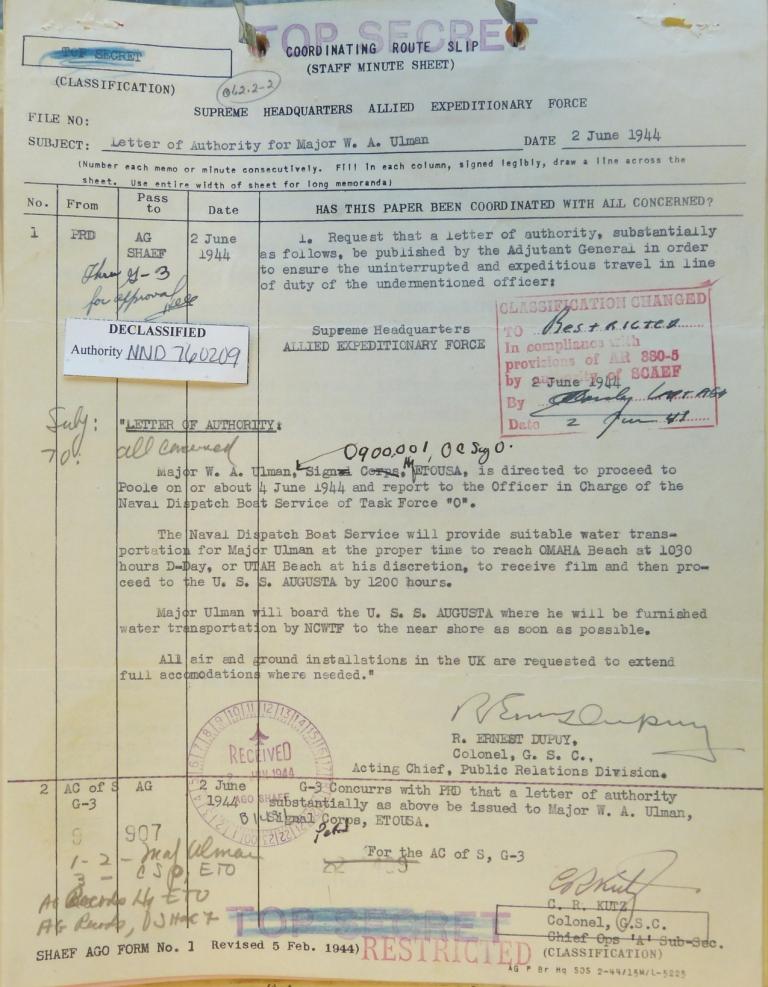
Figure 1. SHEAF internal staffing memo recommending Major Ulman be sent to Normandy on D-Day to pick up film. (National Archives)
In addition, just a small percentage of the beachmasters’ units were ashore. An hour into the invasion, only about 50 men of the naval beach battalions had landed at Utah Beach, and the first major elements weren’t scheduled to land until 1000 hours, shortly before Ulman was due to arrive.[2] Over at Omaha Beach, less than a third of the naval beach battalion was ashore by the time Ulman was due, with the next third just arriving.[3] Beachmasters simply weren’t yet organized to perform any but the most basic critical tasks, and besides, collecting film wasn’t their job.[4]
The Beach Message Centers were responsible for handling message traffic to and from the command ships offshore, and on Omaha Beach it was to be operated by the 246th Signal Operation Company, but it was not expected to be operational until D+1, when its personnel landed.[5] By the time Ulman was due to arrive, it was still proving impossible even to evacuate casualties from the beach.[6] Given that, it’s absurd to expect that the overwhelmed beachmasters were devoting time to tasks that were not part of their responsibilities, such as collecting and dispatching film and/or written journalistic reports. This reflects a hard reality ignored by some latter-day analysts: many capabilities and systems simply could not be available immediately after H-hour, and no one familiar with such operations would expect it.
Perhaps late on D+1, or the next day, the beach organization might have been able to expeditiously handle media products, but no one with any experience of amphibious operations would expect it a mere four hours after H-Hour. So where would that leave Ulman? With the impossible task of hunting down a very few photographers somewhere ashore? A futile job, at best. In short, there was virtually no chance Ulman’s mission could succeed.
•
So it should come as no surprise that it did not succeed. In a June 15 message summarizing photo coverage of the invasion, SHAEF’s Public Relations Division noted, “ULMAN states he was unable to contact photographers, Public Relations Officers or message centers.”[7] (Figure 4) By whatever means he managed to arrive off Normandy in the absence of the dispatch boats, he did eventually end up aboard the USS Augusta, empty-handed. With no dispatch boats available, the Western Naval Task Force command ship fobbed him off on the USS Chase for return transportation. He signed on aboard the USS Chase at 1515 hours on the afternoon of D-Day.[8] He and Robert Capa therefore rode the same ship back to Weymouth on the night of June 6/7, and Ulman didn’t even collect Capa’s film.
All of this demonstrates that Ulman could not have been the mysterious courier who dropped the Utah Beach film in the ocean. Indeed, the only evidence we have of him on D-Day places him in the Transport Area, 13 miles off Omaha Beach.
Exactly What Film Was Lost?
Although we’ve absolved Ulman of any blame for dropping the film overboard, we must address the broader legend that claims such film was collected and lost the afternoon or evening of D-Day, hours after Ulman had departed. To do that we need to delve more deeply into the question on which we previously touched lightly: If that much film did get lost toward the end of D-Day, whose film was it? We’ve already determined that there simply were not that many cameramen present during the hard first hours of the invasion, so let’s attempt an accounting of their D-Day film.
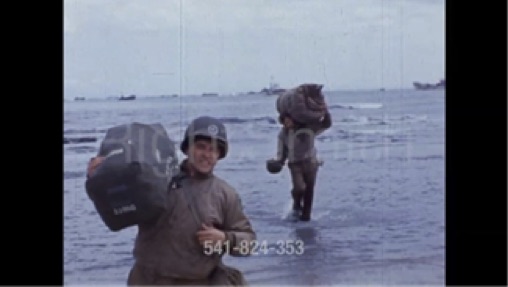
Figure 5. Pete Carroll and Wes Haynes wading ashore on Utah Beach shortly after noon on June 6, 1944. Frame grab from Jack Leib’s motion picture film.
Among the civilian photographers, Capa and Bert Brandt carried their Omaha Beach film back to England themselves on D-Day. The Landing Craft, Tank (LCT) that transported the public-relations support team and several correspondents across the channel, heading for Utah Beach, caught fire during the overnight crossing and turned back. Those correspondents missed D-Day and only made it to Utah Beach on D+2.[9] That leaves the three press cameramen who landed at Utah from LCI(L)-5 between 1216 and 1238 hours: Jack Lieb (News of the Day), Pete Carroll (Associated Press/AP) and Wes Haynes (Office of War Information/OWI).[10] The film they exposed on landing survived, as evidenced by the accompanying images. (Figures 5-7) So it appears none of the civilian cameramen landing on D-Day lost all their film as described in the “dropped overboard” legend.
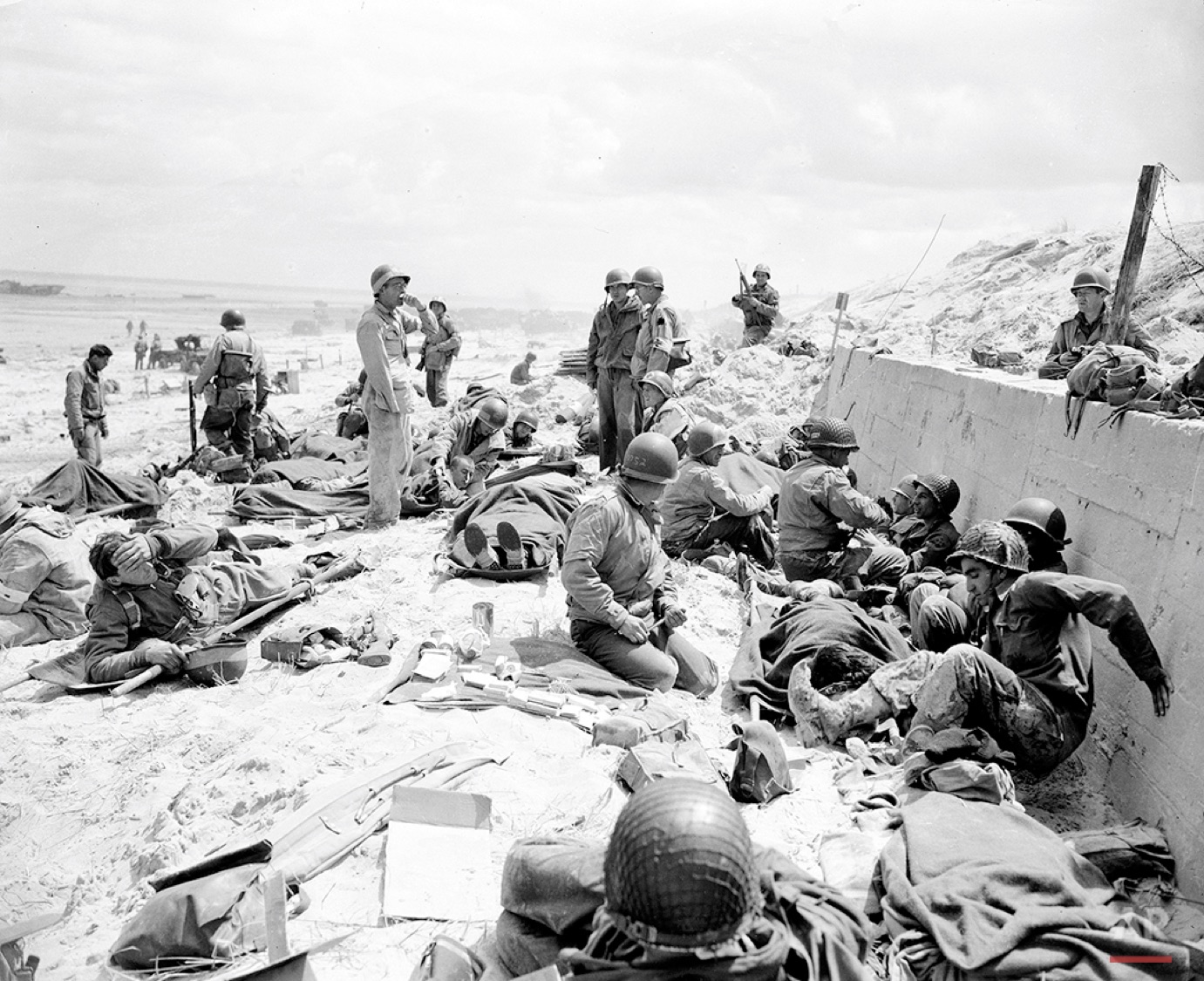
Figure 6. One of several Pete Carroll photos taken on Utah Beach shortly after noon on D-Day. Source: https://apimagesblog.com/blog/2015/11/10/world-war-ii-unforgettable-stories)
•
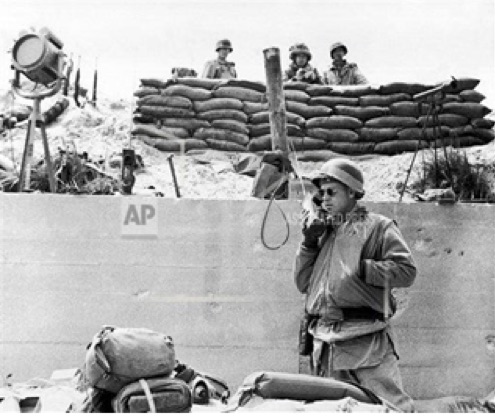
Figure 7. Wes Haynes photo taken on Utah Beach about noon on D-Day. (http://www.apimages.com/metadata/Index/Watchf-AP-I-FRA-APHS418059-WWII- France/7c73ad01df164cde9a0b9c61ff9f92f4/9/1)
•
The experiences of the military combat cameramen differ in detail, but not outcome. The four cameramen of Detachment G, 165th Signal Photo Company (supporting the 4th Division at Utah) were not separately identified in the landing tables. We know part of the detachment was embedded with the initial assault regiment (8th Regimental Combat Team) and the rest probably with the division’s advanced command group. If so, all four would have landed by 0900 hours. In addition, the cameramen of Signal Photo Company Detachment E (supporting the 1st Engineer Special Brigade at Utah) were due to land at 1030 hours.
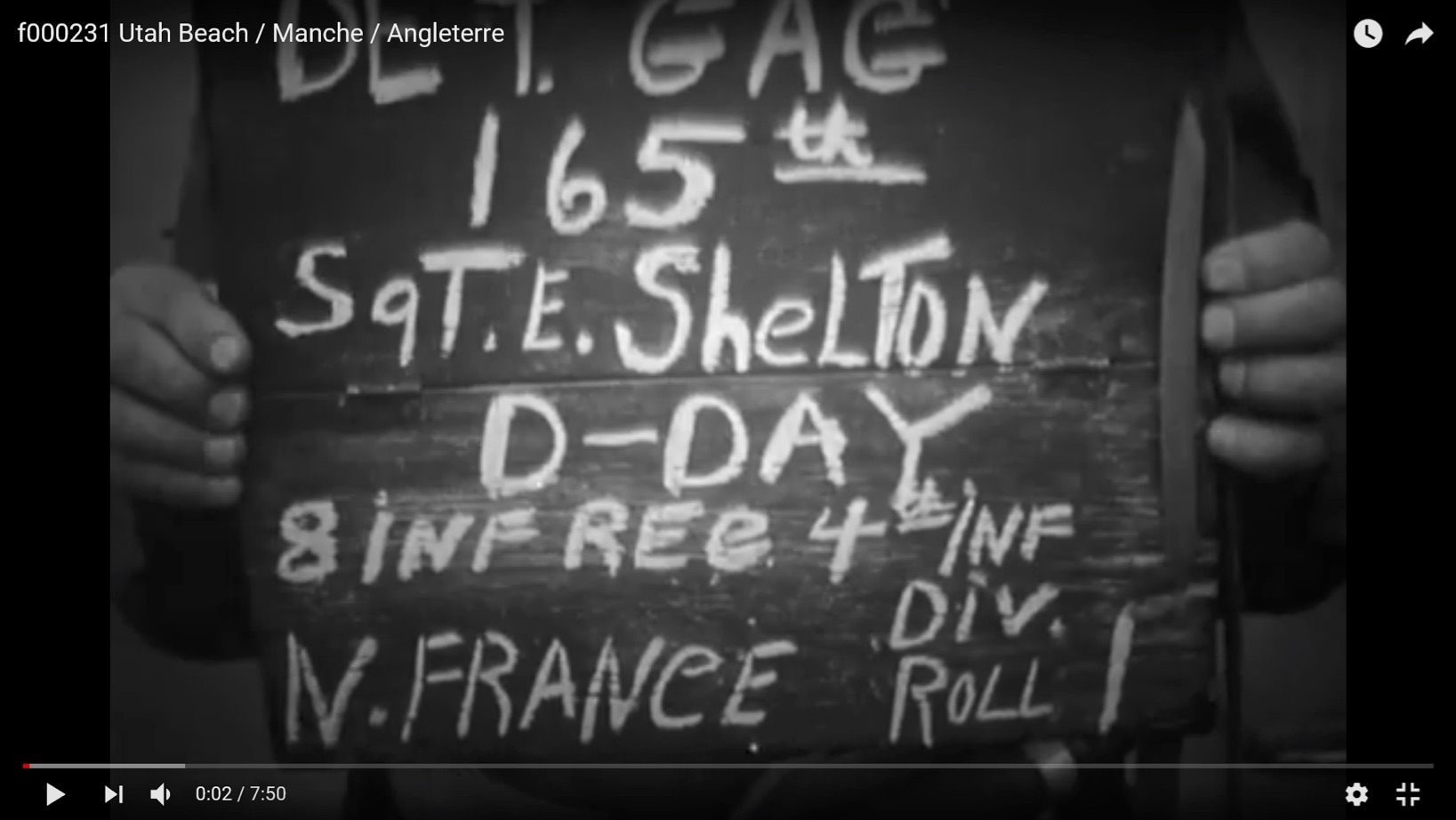
Figure 8. 165th Signal Photo Company, Detachment G’s slate board, screen grab from a roll of motion picture film it shot while embedded with the 8th Regimental Combat Team, D-Day, Utah Beach. (PhotosNormandie, https://www.youtube.com/watch?v=WqloTSOBi4M)
Figure 8 is proof that Detachment G’s film survived, and the abundance of D-Day photos and motion picture clips from the early hours at Utah Beach (e.g., Figure 9) strongly indicates that the film from Detachment E didn’t end up in the water, either. So it would seem film from the great majority, if not all, of the photographers who landed on Utah survived. And that’s important, as the legend’s most common form places the film loss at Utah Beach.
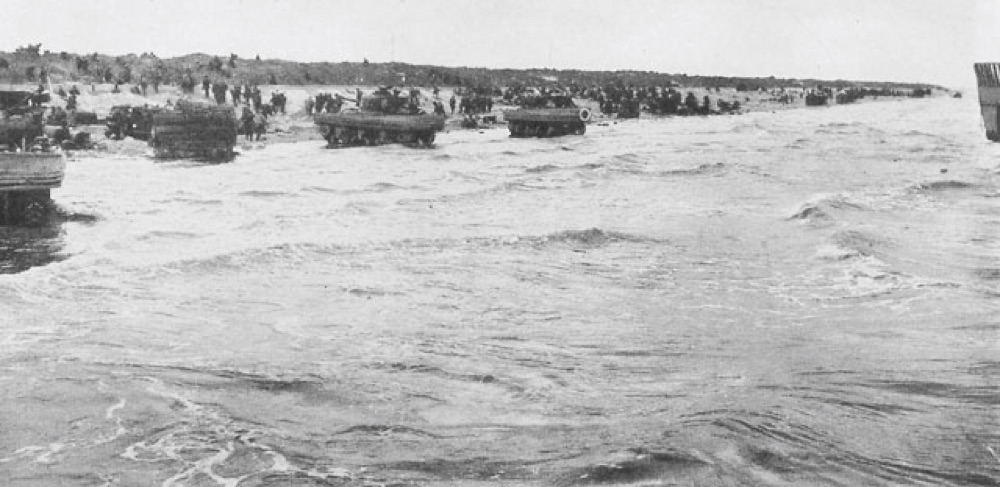
Figure 9. Photo of initial waves, including the duplex-drive (DD) tanks of the first wave, at Utah Beach shortly after H-Hour. Source: From Utah Beach to Cherbourg, 6-27 June 1944, US Army Official History (https://www.ibiblio.org/hyperwar/USA/USA-A-Utah/img/USA-A-Utah-p44.jpg)
•
The factor that made it possible for the making of so many photos at Utah Beach — the lack of serious opposition — also made those photos rather boring. Further east, it was quite the opposite: desperate fighting resulted in less film but more dramatic images. Signal Photo Company Detachment M and a Stars and Stripes photographer supported the 2nd Ranger Battalion in its assault on the cliffs at Pointe du Hoc. One man from this detachment (PFC Kegham Nigohosian) drowned when his landing craft was sunk by enemy shells.[11] A second, SGT Burton Hartman, ended up in the sea when his DUKW sank offshore, losing two of his three cameras in the process.[12] Although he later said he took motion pictures once ashore, it isn’t clear how much of his film supply was lost with his cameras, and how much he was left to work with once he made it ashore.
The Stars and Stripes photographer was reduced to horror-induced vomiting while still aboard his landing craft when a shell killed a man beside him. The work of the surviving photographers was interrupted by more pressing concerns: they “especially distinguished themselves during this perilous operation, seizing rifles from dead Germans and fighting with the advancing troops.”[13] Survival took immediate precedence over filming. While many photos exist showing scenes at this objective, it’s difficult to pin down the date they were taken and the cameraman behind the lens. As a result, we can’t be certain any were taken on D-Day by the men of Signal Photo Company Detachment M.
•
At Omaha Beach it was a bit more certain. Although four Signal Photo Company detachments (D, L, P and Q) were due to land sometime on D-Day, only Detachment L was scheduled to land in the assault waves, with four men due in between 0700 and 0820 hours. One man couldn’t land until late in the afternoon, but this was offset by the arrival of CPT Herman V. Wall, commander of the 165th Signal Photo Company, at about 1130 hours.
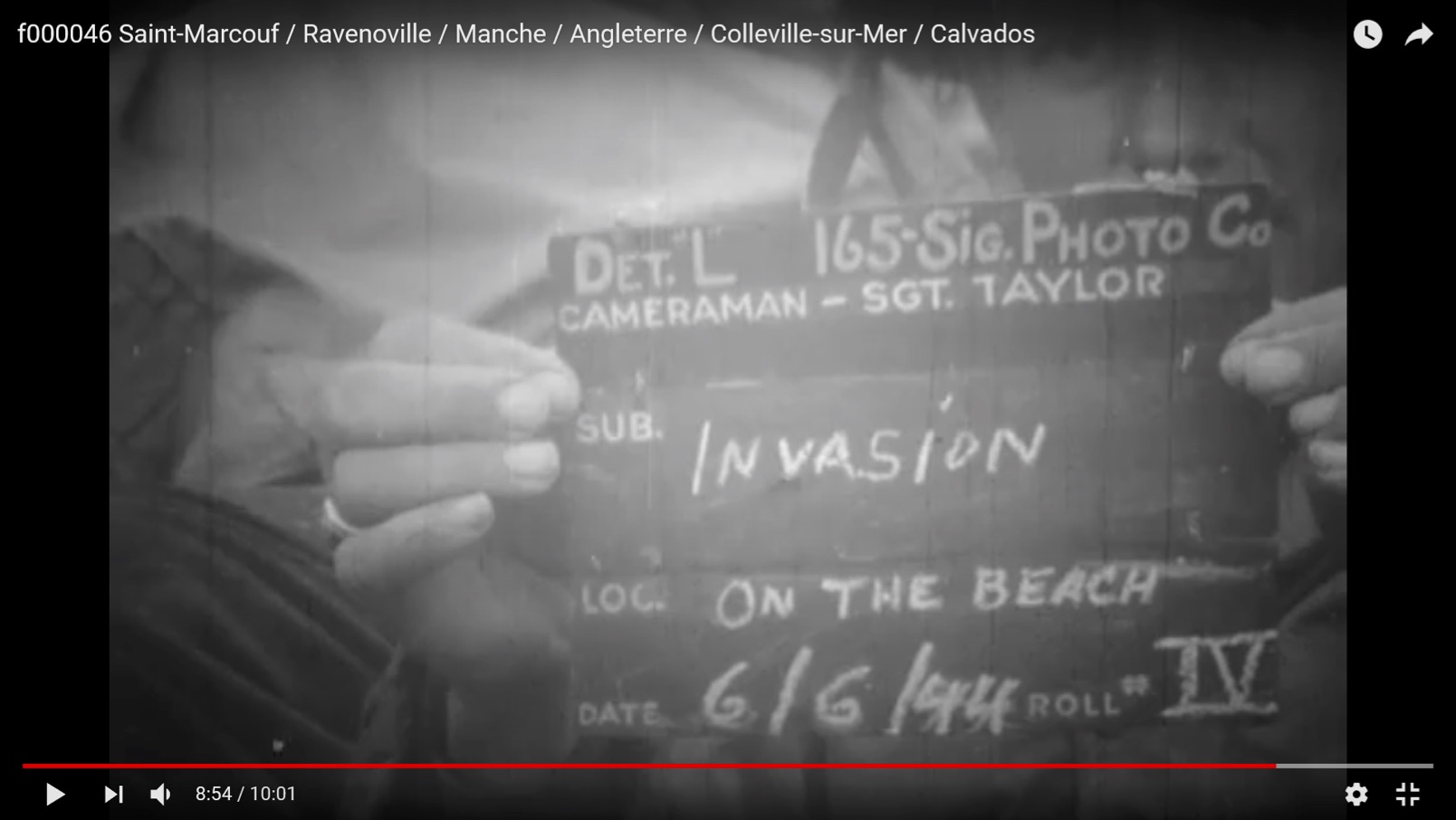
Figure 10. The slate board from a roll of motion-picture film shot by SGT Richard Taylor on Omaha Beach, June 6, 1944. Taylor was one of two motion-picture cameramen of Detachment L, 165th Signal Photo Company.(PhotosNormandie https://www.youtube.com/watch?v=9tEOXL8n3sw)
•
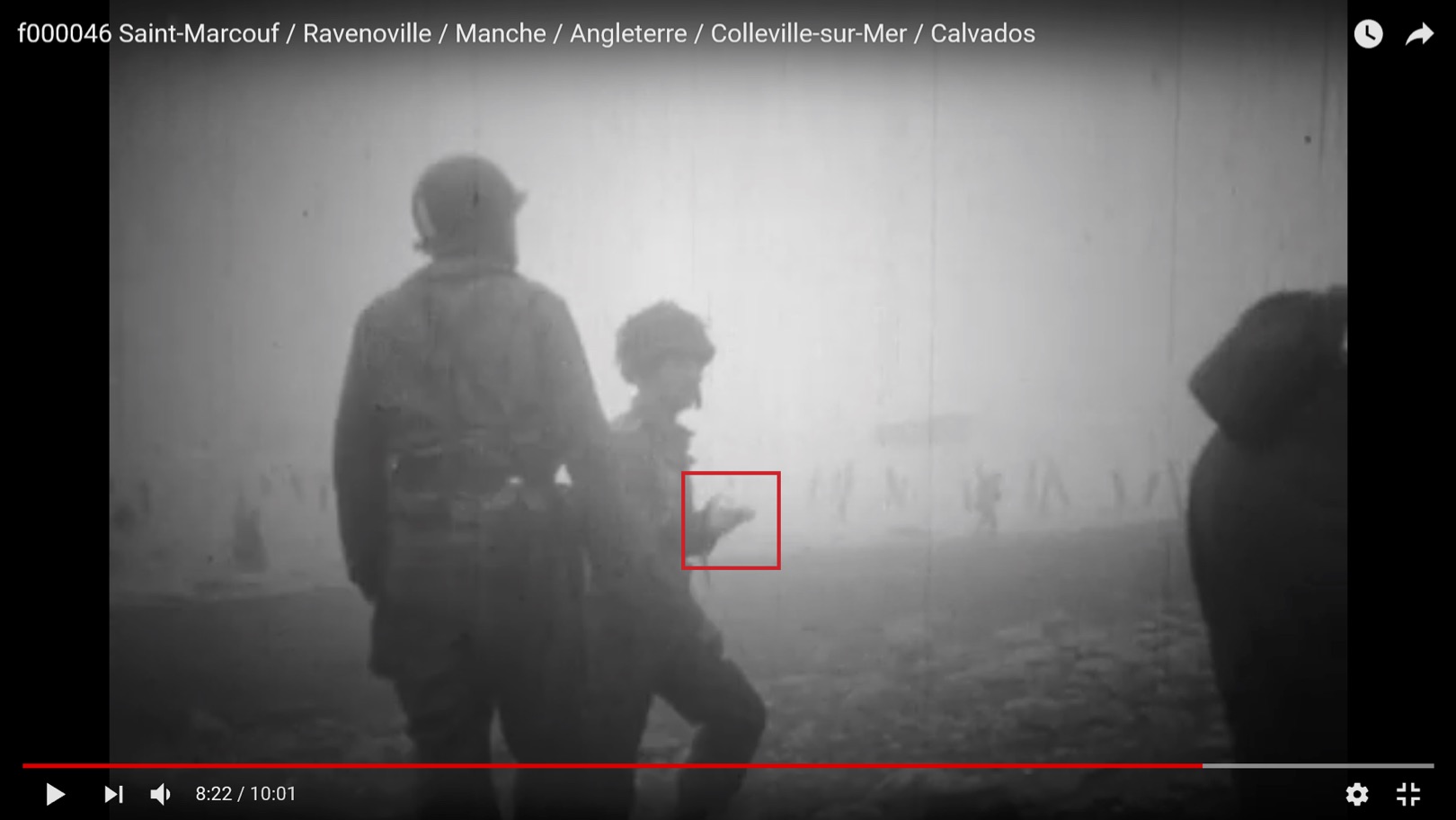
Figure 11. Still photographer from Detachment L, 165th Signal Photo Company on Fox Red beach sector early on June 6, 1944. Red square in center shows his hand holding a 35mm camera. From a motion picture roll shot by SGT Taylor of that detachment. (PhotosNormandie https://www.youtube.com/watch?v=9tEOXL8n3sw&t=534s)
•
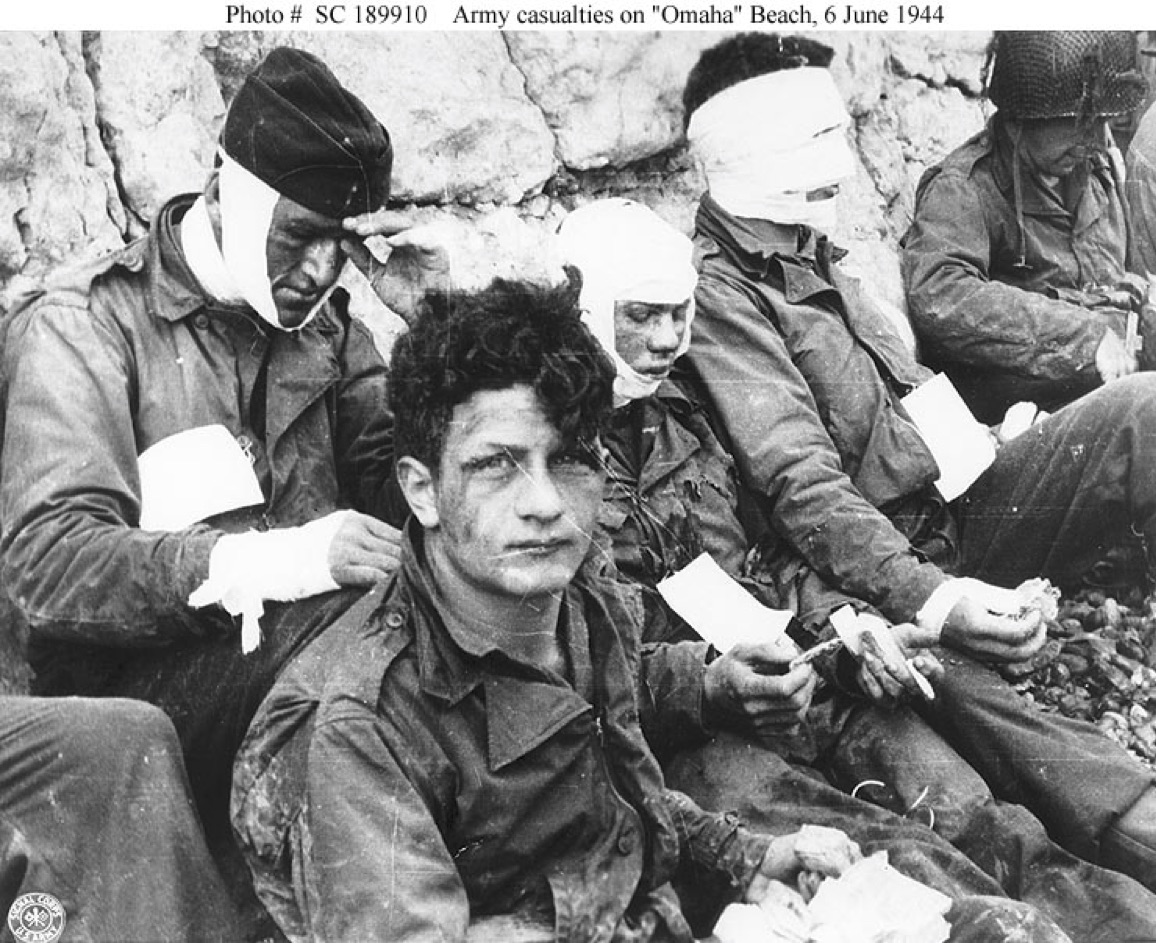
Figure 12. Picture of casualties taken by a still photographer of Detachment L, 165th Signal Photo Company on Fox Red Beach Sector early on June 6, 1944 (Signal Corps Photo 111-SC-189910-S, National Archives)
•
By 1300 hours only four photographers had landed, and two of these were wounded. SGT Taylor was wounded wading ashore at 0700 hours, but shot a number of rolls of motion picture film under the cliffs of Fox Red beach sector before being evacuated. With him on the beach was the still photographer with whom he was paired. Surviving film includes three clips showing Taylor’s slate board (rolls I, III and IV), the first of which was exposed during his run into the beach and included a chalked note: “Went in D-Day Time – H+30.” One of his clips briefly captured his still cameraman. Still photos from these two soldiers are a staple of D-Day coverage.[14] The challenges facing cameramen in these first hours was laconically summed up in one of SGT Taylor’s caption notes: “Several scenes are missing because of difficulties with snipers and machine gunners.”[15] (Figures 10-12)
Elsewhere on Omaha Beach, CPT Wall had been ashore less than an hour when, about 1230 hours, a shell gravely wounded him and killed a correspondent beside him. Both Taylor and Wall carried their film with them when they were evacuated, which contributed to their film being among the first received in London and the most well-known.[16] (Figure 13) Of the four photographers who were ashore by 1300 hours, we can identify the film of three of them in the public record.
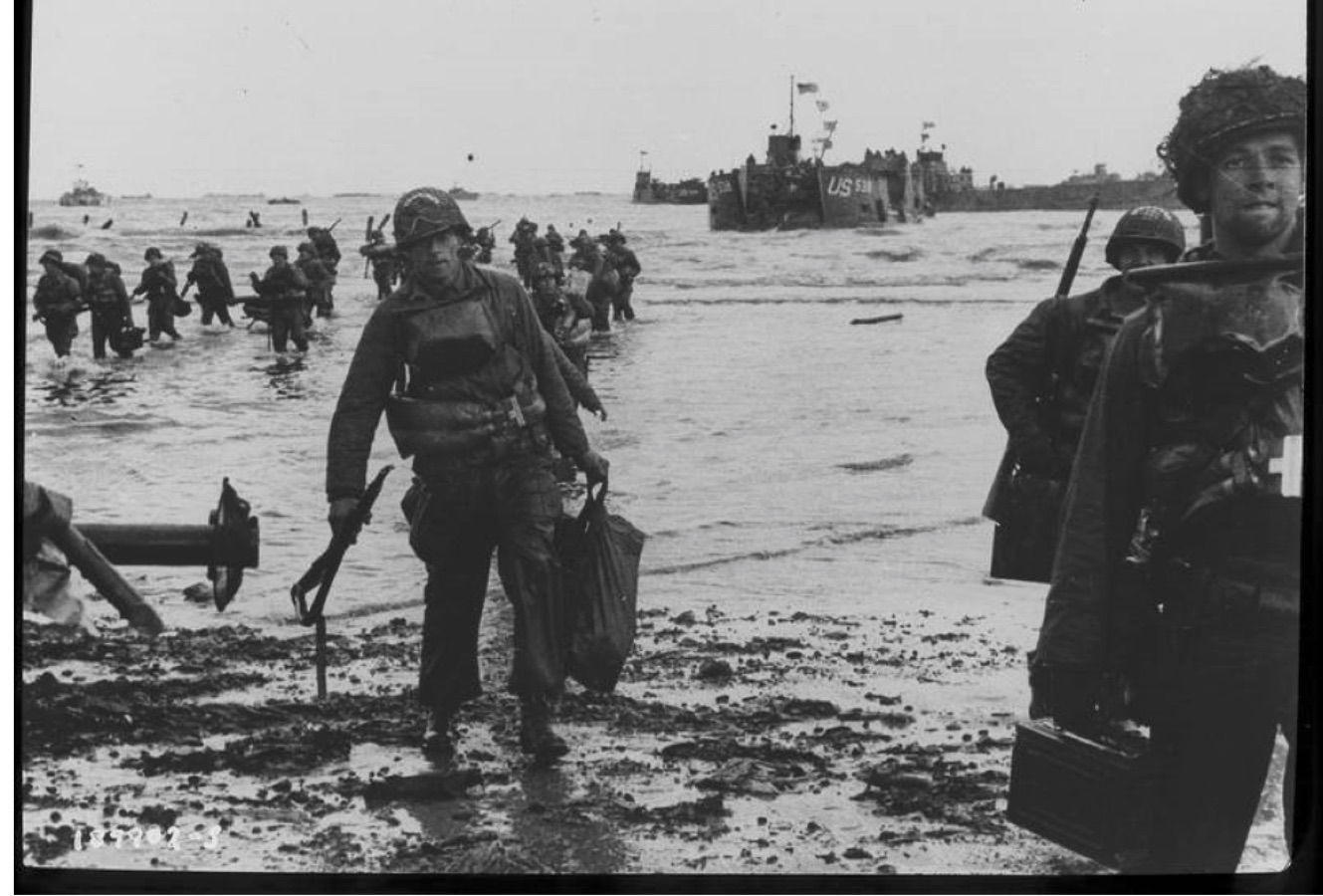
Figure 13. A picture taken by CPT Herman Wall, commander, 165th Signal Photo Company on Omaha Beach, June 6, 1944, shortly before he was wounded. (The Signal Corps: The Outcome, https://history.army.mil/html/reference/normandy/TS/SC/SC3.htm)
[Editor’s note: A detailed account of the D-Day work and experience of Captain Herman V. Wall will appear here later this year. — A.D.C.]
•
We can account for another detachment as well. Detachment D (supporting the VIIth Corps) was due to land on D-Day afternoon, and its first slate board shows June 6. However, its next slate board is dated June 7 and explains that their landing was delayed a day: “Footage of 6/6/44 shot while attempts to land — under shell fire all afternoon — camera waterproofed for beaching — didn’t happen.” (Figure 14) So their D-Day film wasn’t dumped overboard, either; they simply didn’t make it ashore on D-Day.
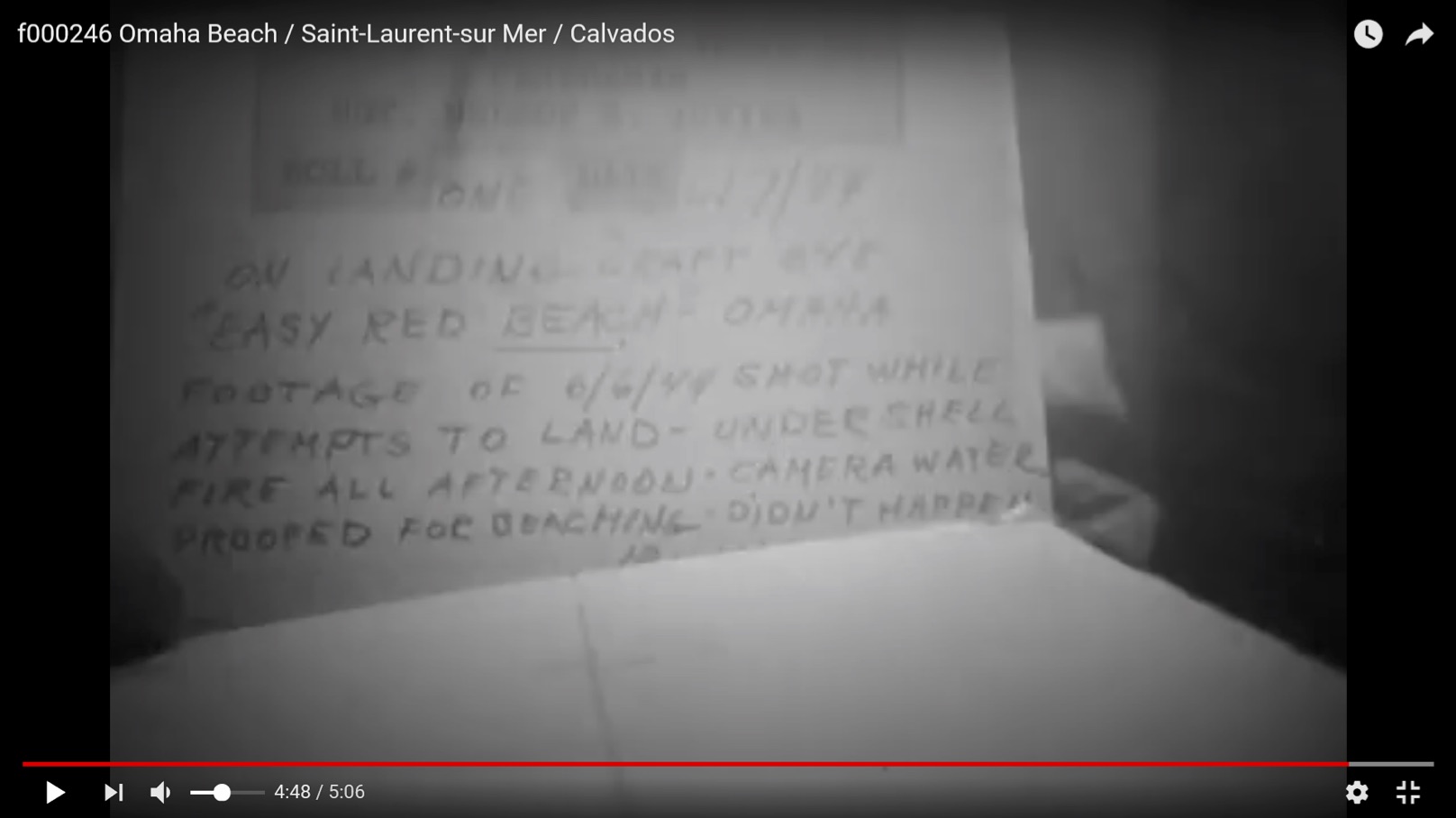
Figure 14. Detachment D’s slate board from June 7, 1944 explaining that they were delayed landing. (PhotosNormandie https://www.youtube.com/watch?v=TLV5t1jVKek)
•
Detachment P (supporting the 5th Engineers Special Brigade) was scheduled to land at 1010 hours, but their landing craft was held offshore until that afternoon.[17] The detachment’s report stated they brought their D-Day film down to the beach after dark and entrusted it to the coxswain of a landing craft.[18] According to a member of that detachment — the same Walter Rosenblum mentioned in Shooting War: World War II Combat Cameramen — none of their D-Day film has ever surfaced. That documentary then went a step further, claiming this detachment’s film was lost when it was dropped overboard by an officer.
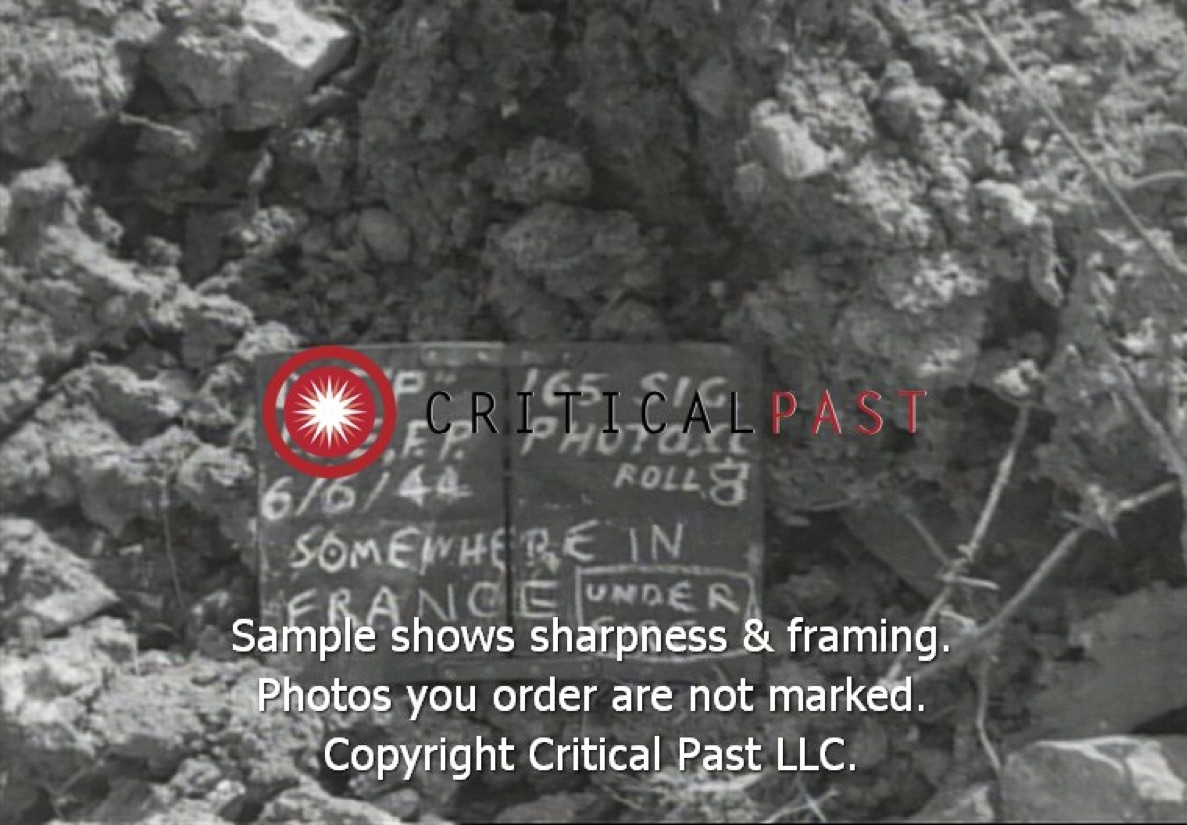
Figure 15. The slate board from a roll of motion-picture film shot by PFC Francis Lee on Omaha Beach on June 6, 1944. Lee was one of two motion picture cameramen of Detachment P, 165th Signal Photo Company (Critical Past, https://www.criticalpast.com/video/65675061306_United-States-soldiers_Omaha-Beach_5th-Engineer-Specialist-Brigade)
But it definitely was not lost, in the ocean or otherwise, as evidenced by the accompanying image taken ashore on D-Day. (Figure 15) In fact, Detachment P’s slate boards show up in four separate clips, including two shot on June 5 during the crossing, and one early the morning of D-Day, off Omaha Beach. Further, there are several stand-alone clips showing the unit’s LCT circling offshore, the troops debarking at Fox Red beach sector, and, finally, shots filmed on the beach.
The detachment’s exposed film clearly survived the trip in the hands of that unnamed coxswain and clearly made it back to London. It just wasn’t particularly interesting, and perhaps arrived a bit late for the news cycle. A few short clips were extracted and inserted into various later invasion montage products, but otherwise it lay forgotten in the archives. It was, however, much more dramatic to blame an unnamed colonel for the loss of the film than go to the effort of actually searching the archives. And that’s how rumors grow.
•
The activities of Detachment Q remain a mystery. They were tasked to support the 6th Engineer Special Brigade (ESB), but the 5th Engineer Special Brigade initially controlled all beach activities during D-Day.[19] The 6th ESB only began to assume command of the western half of Omaha Beach sometime after 1500 hours. No D-Day film exists that can be attributed to Detachment Q’s cameras. It’s likely that they did not land on D-Day, but rather came in the following day with the bulk of the 6th ESB’s troops.[20] Although this cannot be proven, the fact that this detachment’s D-Day activities (as well as those of Detachment D) were omitted from the summary of the 165th Signal Photo Company’s D-Day activities tends to support the conclusion that Detachment Q did not make it ashore on June 6, at least not during daylight.
•
And, with that, we have accounted for the D-Day film from most detachments. Detachments G, E L and P — as well as Captain Wall — saw their D-Day film survive and make it to the U.K. and into the public record. Detachment D did not land, so had no D-Day film. There are only two gaps in the D-Day record. The lack of film from Detachment M’s survivors at Pointe du Hoc is plausibly accounted for by casualty, submergence, and their need to serve as riflemen during the crisis there. And the lack of D-Day film from Detachment Q is most likely explained by delayed landing. Even with these two gaps, it seems we’ve disproven the “dropped overboard” legend.
Without question, Major W. A. Ulman stands exonerated of losing film from Utah Beach. In fact, we have no evidence he was even offshore of that beach. It is clear that the “dropped overboard” story is just that: a story. There is absolutely no evidence to substantiate it, and much to disprove it. In the few instances where useful details are included in the story, they are easily disproven. Because the story has varied so widely over time, we can’t rule out the possibility there may once have been a germ of truth to it, but certainly nothing that resembles the current sensational versions. And absolutely nothing that implicates Ulman. … (To be continued.)
•
Notes:
[1] A detachment consisted of seven men, but three men from each detachment were generally slotted to bring in the detachment’s vehicles much later on D-Day.
[2] Landing Tables for Utah Beach can be found in Battle Analysis, Course P651, VII Corps, D-Day, on file at the Combined Arms Research Library, Fort Leavenworth, KS.
[3] 1st Division Neptune Field Order No. 35, Force “O,” April 16, 1944, Appendix 3 (Landing Tables) to Annex 3.
[4] The tasks assigned to the beachmasters of the naval beach battalions were to: remove underwater obstacles; mark obstructions to navigation; ship-to-shore communications; and direct the beaching of craft. Provisional Engineer Special Brigade Group, Operation Report Neptune, Omaha Beach, September 30, 1944, p. 201.
[5] Provisional Engineer Special Brigade Group Field Order 3, Operation Neptune, (Annex 6, Signal), dated May 11, 1944, p. 7.
[6] Personal Wartime Memoir of Major Charles E. Tegtmeyer, Medical Corps, Regimental Surgeon, 16th Infantry Regiment, 1st Infantry Division, Chapter XX, p. 15.
[7] Message, SHAEF PRD to HQ FUSA (Signals Officer): 152109June1944.
[8] USS Samuel Chase War Diary, 6 June 1944 stated: “1515 [hours] Col W. A. ULMAN, UAS, reported on board for transportation. Authority: Commander Western Task Force memo dated 6 June 1944.”
[9] Barney Oldfield, Never a Shot in Anger (Capra Press, Santa Barbara, 1986), pp. 81-82.
[10] USS LCI(L)-5 Report of Operations in the Invasion of Normandy France, June 2-23, 1944. “At 1216 hours this ship reached a point about 1000 yards off the beach where we unloaded by U.S. LCM’s 76, 88 and 94. At 1238 hours the unloading was completed and all troops and War Correspondents were put on the LCM’s without casualty.” Lieb’s film documents the identity of the three correspondents aboard LCI(L)-5.
[11] O’Donnell, Dog Company: The Boys of Pointe Du Hoc, Da Capo Press, Boston (2012), p. 306
[12] LA Times, Friday, June 5, 1964, “D-Day Was Damp for ex-Sergeant.”
[13] “A Typical Signal Company (Basis 165th Signal Photo Co, APO 230),” Signal Section Monographs – Histories, Record #527c, U.S. Army, U.S. Forces, European Theater, Historical Division: Records, 1941-1946, p. 3.
[14] Oddly, most of the still photos from these men are credited to Taylor, a motion-picture cameraman. A photo of Taylor in an Army hospital shortly after D-Day shows him with his Eyemo motion picture camera, but no still camera. Presumably Taylor carried his partner’s still camera film with him when he was evacuated with his wounds, and was inadvertently given credit for all the film in the packet.
[15] Office of the Chief Signal Officer, HQs, ETOUSA, Current Information Letter, July 1944, Vol. I, No. 7, pp. 41-42.
[16] Thompson and Harris, The Signal Corps: The Outcome, The United States Army in World War II, The Technical Services, Washington, DC (1991), pp. 112-113. Wall actually achieved two “firsts.” He sent two carrier pigeons with film exposed while offshore, which was the first film received from the vicinity of the beach. The film he carried with him when evacuated was the first film from on the beach received in London.
[17] Detachment P, 165th Signal Photo Company was actually Detachment D, 162nd Signal Photo Company. For the invasion it had been attached to the 165th, which, already having its own organic Detachment D, informally rechristened the team from the 162nd as Detachment P. It had caused confusion ever since. Historians searching for film belonging to Walter Rosenblum’s detachment from the 162nd fail to recognize its nom de guerre Det P, 165th SIG,” which is evident on the slate boards.
[18] Historical Report, Office of the Chief Signal Officer, VOL III, Appendix A, Detachment P, 162nd Signal Photographic Company, Report of Unit Activities on 6, 7 June (D-Day, D-1), pp. 47-48.
[19] Headquarters, Provisional Engineer Special Brigade Group, Field Order Number 3, May 11, 1944.
[20] Beck, et al, United States Army In World War II, The Technical Services, The Corps Of Engineers: The War Against Germany, Washington D.C. 1985, p. 332.
•
Text copyright © 2020 by Charles Herrick. All rights reserved.
•
(For an index of links to all posts in this series, click here.)
•
 Charles Herrick joined the U.S. Army in 1970 and graduated from the U.S. Military Academy at West Point in 1974. Commissioned in the Infantry, he earned the Ranger tab and Master Parachutist’s wings. He served in a variety of positions from company grade officer to the Pentagon. He earned the Combat Infantryman’s badge while assigned as the Operations Officer of the 193rd Infantry Brigade in Panama in 1989, and later graduated from the U.S. Army War College.
Charles Herrick joined the U.S. Army in 1970 and graduated from the U.S. Military Academy at West Point in 1974. Commissioned in the Infantry, he earned the Ranger tab and Master Parachutist’s wings. He served in a variety of positions from company grade officer to the Pentagon. He earned the Combat Infantryman’s badge while assigned as the Operations Officer of the 193rd Infantry Brigade in Panama in 1989, and later graduated from the U.S. Army War College.
Since retiring from the Army in 1996, Herrick has continued to work on defense issues as a contractor in East Asia, Latin America, the Balkans, Africa and Central Asia. He holds an MBA from the University of California at Los Angeles. He lives in California with his wife, where he pursues his passion for military history. To contact Charles Herrick, click here.



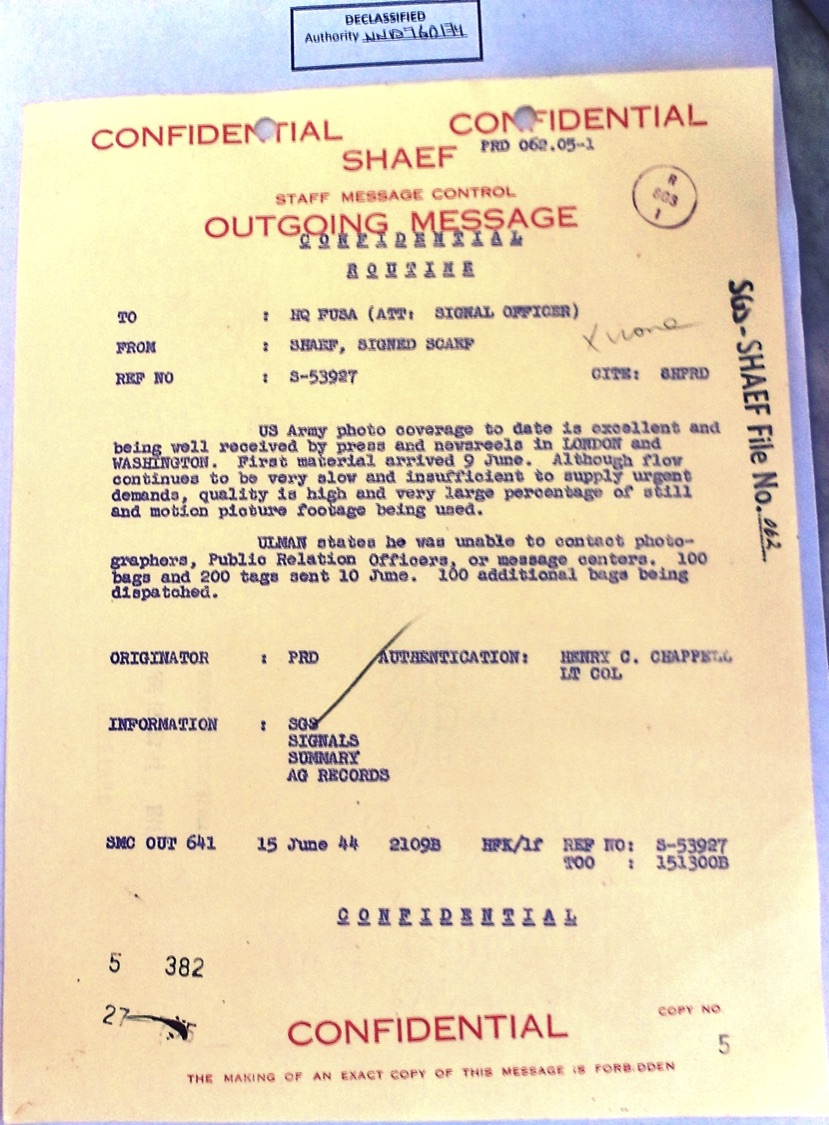




I hope this is still a live message receptor. I heard the “dropped in the water” story many years ago. I have no problem with your analysis. I just want to get it right. Of all the film exposed on OMAHA there are very few pictures of U.S. tanks. Yet about 50 were landed especially on the west end of the beach where the Rangers were. Gen. Cota said he saw 18 Sherman tanks when he landed in the first wave. Why no pictures?
The simplest answer is this: LIFE assigned two photographers to the Omaha Beach sector of the Normandy coast invasion — Robert Capa and Bob Landry. As Herrick concludes in another part of our investigation, due to factors beyond his control Landry didn’t land until D+1, then quickly made his way inland to catch up with the advancing troops. So we have only Capa’s handful of photos as independent press coverage of Omaha Beach on D-Day. He stayed only a few minutes, and did not cover much ground while there.
US Coast Guard photographers and cinematographers — such as Robert Sargent and David T. Ruley — were assigned to stay with their respective Coast Guard vessels; they did not go ashore. So their stills and movie clips are necessarily restricted to where those vessels headed.
US Army Signal Corps photographers and cinematographers like Captain Herman V. Wall did land, but also perforce landed where the demolition teams had opened gaps in the obstructions.
In short, the photographers and cinematographers covering the landing had access limited by circumstance to specific sections of the beach. Consequently, their reportage was spotty at best. And, understandably, they paid more attention to the situation of the troops than to the tanks and other vehicles and vessels.
I hope this provides at least a partial answer to your question.
Mr. Miller,
Thanks for commenting. It’s a good question. To amplify Allan’s comments . . .
Of course, we have several pictures of tanks on the eastern half of Omaha Beach, I used several of those pictures to illustrate various posts in this project.
But as for the western half, not so much. I lay this problem at the feet of those who scheduled the landing slots for the various photographers. That and some bad luck.
The 1st Div sent in their photo detachment (Det L, 165th Sig Photo Co) with it’s lead 16th RCT and the advanced div command element, but of course both came in on the eastern half.
Although the 29th Div had a photo detachment (Det H), they elected to land them with the div HQs (arriving on D+1) rather than with the 116th RCT, which landed on D-Day attached to the 1st Div. The photo det with the Ranger Force went in on Point du Hoc, rather than with the Battalion (+) that landed on Omaha. And Det Q which was supposed to land with the 6th Engineer Special Brigade didn’t make in on D-Day.
So none of the Army photo teams covering that western half of Omaha Beach landed there on D-Day. And no cameramen means no photos of tanks (or anything else).
Bert Brandt, the still photo pool man for that half of the beach just captured a gaggle of halftracks and jeeps in his small haul of photos.
Much the same story goes for the US Coast Guard photographers assigned to LCIs at Omaha Beach. Six LCIs carried USCG photographers, but two of these were command ships and did not carry troops or hit the beach. Three landed on either Easy Red or Fox Green. Unfortunately, the sole USGC photographer for the western half of Omaha Beach was aboard LCI(L)-92, which was destroyed on the beach. Its photographer lost his gear and film when he abandoned ship.
So the answer to your question simply seems to be that there was a dearth of photographers on that half of the beach. By the time additional cameramen arrived with Force B in the next days, the action had moved inland, and presumably the cameramen followed. Surviving tanks had moved inland. Repairable tanks (usually just thrown tracks) were fixed or getting fixed. And only a number of total wrecks dotted the beach for the occasional wandering cameraman to point his lens at. Such as this one on Dog Green Beach:
https://www.ibiblio.org/hyperwar/USA/USA-A-Omaha/img/USA-A-Omaha-57.jpg
Photo Source: Omaha Beachhead, 6 June – 13 June 1944, pg. 109
https://www.ibiblio.org/hyperwar/USA/USA-A-Omaha/USA-A-Omaha-5.html
Hope this answers your question.
In your article you say that Bert Brandt did not actually land on Utah beach. However, my understanding is that he landed for 30 minutes and then returned to London on transport for the wounded. The article below is consistent with what I have found from newspaper reports and interviews with Mr. Brandt.
https://ww2ondeadline.substack.com/p/bert-brandt-sent-the-first-photos
Thank you. That’s actually a very good question. Brandt’s interviewers have claimed he did step ashore for as much as a half hour (though I don’t think I have ever seen him directly quoted saying that). The problem is there’s no evidence he did. The only verifiable photo I have been able to trace to him is the one from within an LCT-5 landing craft showing a couple jeeps driving in the surf to shore. There isn’t a single shot from the beach.
That shot of the beach made some of the papers on 8 June (and even made the Oakland, CA Tribune’s late edition on 7 June), as part of the first shots from the invasion for a news hungry readership at home. If he had actually made it ashore and taken pictures, I am pretty certain they would have used those rather than the very tame photo of a couple jeeps in the surf.
There is another photo of troops wading ashore form LCI(L)-488 that is attributed to Brandt, and it looks like he was standing in the surf or at the waterline. But the shipping in the distant background proves this was not taken on D-Day, and was taken when he returned to Normandy two or three days later.
There are many D-Day photos mistakenly attributed to Brandt, but they come from other photographers, such as Cpt. Herman Wall – who, by the way, got his pictures back before Brandt did, and into many more papers. McGlincy embraced the fiction of Brandt’s photo being first back, and I suspect the 30 minute detail was another fiction.
Unfortunately I have found that far too many stories people tell about their D-Day experiences have exaggerations – especially when they come from media figures. They were so obsessed with trying to get scoops or come up with stories that sounded more stupendous than the competition, that facts usually suffered. Hemmingway is a perfect example.
As a result, I generally don’t accept a reporter’s or photographer’s account without confirmation of some sort.
I am quite willing to consider any firm evidence that he did step ashore. It’s just that I have yet to see any.
Hope this answers you question – or at least explains my reasoning. Thanks again for a good question.
With the approach of the 80th anniversary of D-Day a spate of “lost film” stories are popping up across the internet. Once again, the fictitious Ulman duffel bag settles to the bottom of the Channel. At this point, there is no excuse for the myth being rejuvenated. It is not just lazy history; it is an intentional disregard of the truth to gain clicks. Chuck, you did an outstanding job of researching, organizing and sharing the truth about the film taken on D-Day. This was a significant undertaking and an important contribution to the historical record.
Tom,
Those are kind words and much appreciated.
Those who read carefully Part 1 of this post will recognize Tom Hogan as the source of much of the information on Maj Ulman. Tom has gone on to perform further extensive research on the photographic efforts to cover the Normandy landings, and has found a great deal of information that expands on topics I covered only lightly in this series.
I look forward to seeing the results of his work online or in print in the near future.
Thanks again for everything, Tom.
Dear Readers:
Since I wrote this series of post four years ago, another researcher has pursued this topic and advanced our knowledge and understanding of the D-Day film coverage significantly. Joey van Meesen is a Dutch researcher who focuses on US Army subjects. He runs the SNAFU DOCS website (among his many other endeavors) and has produced some excellent documentaries – extremely well researched and very fine quality. His latest documentary, “The D-Day Cameramen Who Filmed Normandy Invasion on June 6, 1944 – WWII Then & Now” directly complements the guest post above. In fact, Joey’s meticulous research has addressed many aspects I did not cover and most importantly filled in the major missing gaps I had concerning Detachment M (which accompanied the Rangers to Point du Hoc), and gives long overdue credit to two of its cameramen for their acts of valor.
I wholeheartedly recommend that documentary (as well as his others). It can be found at: https://youtu.be/nz2W81nzHu4
Respectfully,
Chuck Herrick